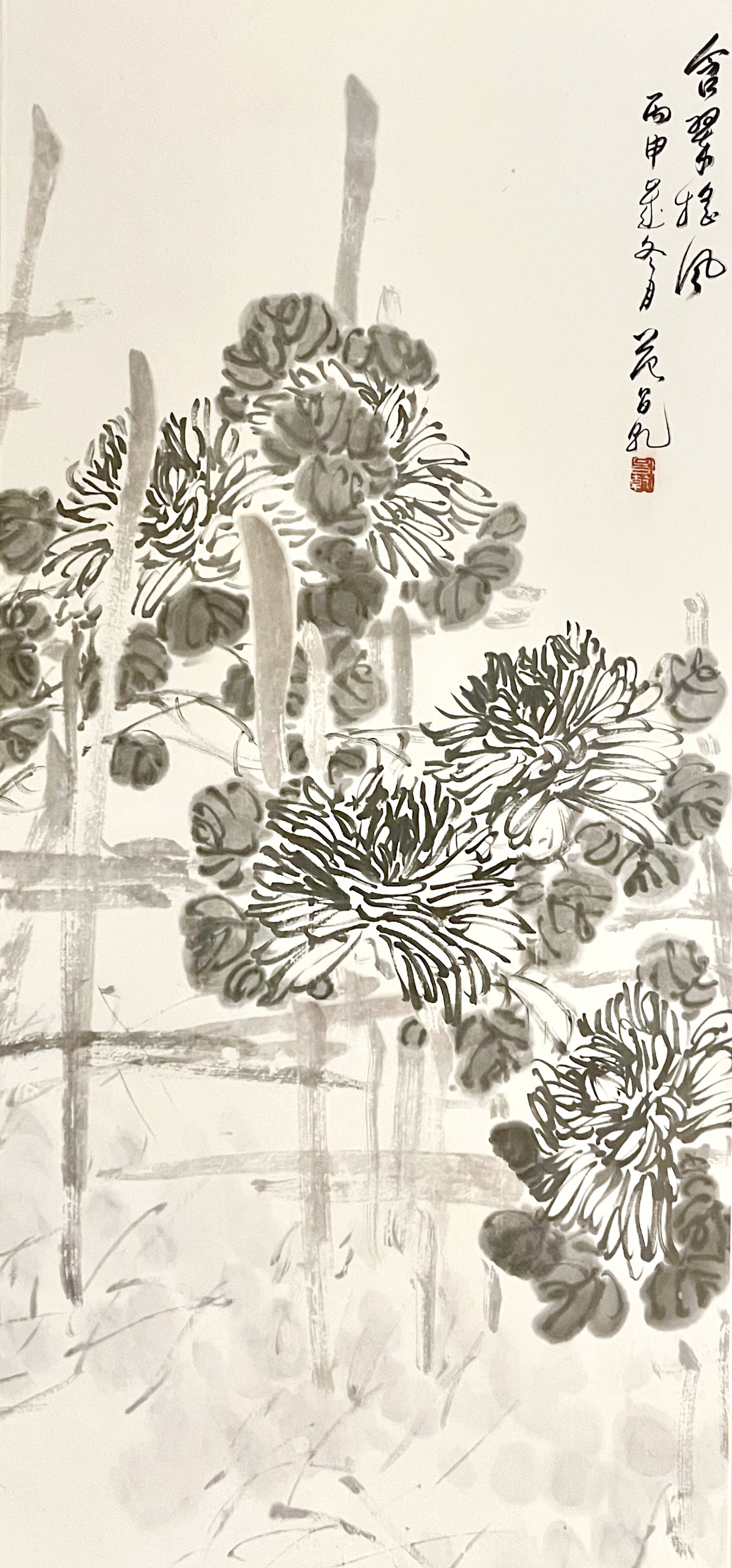"The works of the pioneer artists are all very outstanding. Some of them incorporate the unique sceneries of Singapore or Southeast Asia in their paintings while others depicted the local customs and traditions. They actively incorporate Western painting concepts to create abstract and creative works of art. Their creations formed one of the distinct art identity from Singapore and the region during their time.
I have great respect for this group of pioneer artists. Not only are they dedicated at painting, but they also spent their time and cultivated the next generation of painters by teaching art in schools. They actively established and participated in different art societies, so that more artists who love painting can participate in the activities. They also travelled in groups to different Southeast Asian countries for paintings trips, and through those creations we are now able to appreciate the beauty of Singapore and Southeast Asia during those times.
I am very happy to share some of their paintings with art lovers in Singapore through this special group exhibition."
-Terence Teo, Gallery Director
Chen Chong Swee (1910 -1985)
In 1934, Chen Chong Swee travelled to Singapore and started teaching at numerous schools such as Tao Nan School, Chinese High School and Chung Cheng High School. 19 years later, Chen Chong Swee became the Head of Chinese Painting department at the Nanyang Academy of Fine Arts and taught till 1975
Chen Chong Swee specialised in Chinese ink painting. He created still life paintings of tropical fruits coconuts, bananas, rambutan, pineapples or flowers such as orchids. Chen Chong Swee also painted many landscapes. They were inspired by his observations of mountains and villages in China, Singapore, Penang, Malacca and Bali.
Chen Chong Swee was deeply engaged in the local art scene. He co-founded the Singapore Watercolour Society with other artists and served on the management committees of numerous art societies such as the Singapore Art Society. He wrote and spoke about the importance of having a National Art Gallery in Singapore as well as the need to engage with more female artists.
In 2017, The National Gallery Singapore held a show titled “Strokes of Life: The Art of Chen Chong Swee” featuring key works from the artist’s six decade long career.
Tropical Affair by Chen Chong Swee
陈宗瑞作品
Kampung by Chen Chong Swee
陈宗瑞作品 - 甘榜
Rice Field by Chen Chong Swee
陈宗瑞画作 - 稻田
Orchid by Chen Chong Swee
陈宗瑞画作 - 兰花
Landscape Painting by Chen Chong Swee from 1980 - Peace
陈宗瑞1980年画作 - 和平
Chen Chong Swee was deeply rooted in the tradition of Chinese ink painting. When he studied at the Xinhua Academy of Fine Arts in China, he studied traditional Chinese painting while majoring in western art. When Chen Chong Swee lectured at NAFA in Singapore, he taught Chinese art composition and theory.
Chen Chong Swee also acknowledge that Chinese ink painting should change with the times to remain relevant with audiences. He once shared that should Chinese painting be renewed, he would think of accommodating new subjects and to be able to express modern life. He even suggested that English and Malay poems could be used as colophons in Chinese paintings to increase their relevance for local audiences.
Fruits Still life by Chen Chong Swee from 1952
陈宗瑞1952年静物画作 - 水果
Landscape by Chen Chong Swee from 1956
陈宗瑞1956年山水画 - 高山流水
Chen Wen Hsi (1906 - 1991)
In 1948, Chen Wen Hsi travelled to Singapore and staged an exhibition at the Chinese Chamber of Commerce. He was persuaded to settle in Singapore upon the expiration of his visa. He was then employed to teach art at both Chinese High School and NAFA. He retired from teaching in the 1960s.
Chen Wen Hsi specialised in Chinese ink painting. He painted many subjects such as gibbons, fishes, ducks, frogs, herons and sparrows. They were realistic and lively. Chen Wen Hsi was also known for utilising the finger-painting technique in his creations, making them unique when compared with other artists of his generation.
Chen Wen Hsi’s painting “Herons” was part of the National Gallery Singapore’s highlight programmer titled “My Masterpiece” where 12 significant artworks were selected and talked about by 12 well known personalities. His painting “Two Gibbons Amidst Vines” is featured on the reverse of the $50 not as part of the portrait Series of Currency notes released in 1999.
Sparrows by Chen Wen Hsi
陈文希作品 - 麻雀
Two Gibbons by Chen Wen Hsi
陈文希作品 - 两只猿猴
Chen Wen Hsi painting “Chickens Amidst Bamboo”
陈文希作品 - 鸡与竹
Chen Wen Hsi painting of fishes
陈文希作品 - 鱼
Chen Wen Hsi painting of Herons
陈文希作品 - 苍鹭
Chen Wen Hsi painting of Two Gibbons
陈文希作品 - 猿猴
The Gibbon had always been a well known subject amongst artists and scholars. They remind viewers of the literati’s desire for a less sophisticated existence as gibbons dwell in high cliffs and can hardly be spotted in nature.
Chen Wen Hsi was particularly fond of the lifelike quality of a reproduction of a painting of gibbons by Muxi, an artist from the 13th century. When he spotted a white face gibbon in a local pet shop in Singapore after he arrived in the 1940s, he bought it for $300 as it resembled the one he saw in Muxi’s painting. As time passed, Chen Wen Hsi kept 6 gibbons in his home in Singapore, one white, one grey and four black ones. He also kept other birds and animals. They inspired many of his creations.
Chen Wen Hsi’s painting of Birds
陈文希作品 - 鸟
Chen Wen Hsi’s painting of chickens
陈文希作品 - 鸡
Event Photos of visit by artists
Cheong Soo Pieng (1917 - 1983)
Cheong Soo Pieng left China and relocated in SIngapore in 1946. He started teaching art at the Nanyang Academy of Fine Arts and educated students for 14 years.
From 1961 to 1963, Cheong Soo Pieng was able to travel to Europe. He exhibited his paintings in three solo exhibitions, twice in galleries in London and once in Munich. This marked the start of new experimentations in abstraction for the artist. He broke away from traditional forms of presentation and redirected his art based on personal expression formulated with elemental shapes and patterns.
In 2024, National Gallery Singapore held a major exhibition titled “Cheong Soo Pieng Layer by Layer”. It focused on material analysis to reveal the artist’s thought process, the materials that he used and the way he created his paintings.
Abstract Landscape by Cheong Soo Pieng from 1961
锺四宾1961年作品 - 风景
“An artist’s ability to draw should not be measured in terms of how accurately and minutely he can reproduce the object he draws. For example, a one-eyed face can be far more vocal than another which has all the facial details carefully reproduced. An artist must not aim at reproduction, for it that were the case, then why paint at all. Photography can do the job far more efficiently.
A mere pictorial recording of what I see is not enough, I want to put my feelings on the canvas. There are others who do not like my paintings on the grounds that they are not beautiful. But, again, I do not think it is my duty to paint something beautiful. It is not beauty I want to capture, it is the mode, the chief characteristics of my subject that I want to depict. ”
Interview was originally published in Monsoon. Vol.1, No.1 (Oct - Dec 1961)
Landscape Painting by Cheong Soo Pieng from 1964
锺四宾1964年山水画作品
“这些先驱画家的作品都相当出色,有的融入新加坡或东南亚地区独特的景色与人文,呈现出当时的风土人情,更有的积极融入西方绘画概念创作出又抽象又具有创意的画作。无论是无意还是刻意,他们的创作逐渐形成了当时本地众多画风当中一种鲜明的形象。
我非常喜欢这一群画家,他们不但努力绘画,也通过教画培育下一代画家,他们积极创办与参与不同的画会,让更多热爱绘画的朋友们能参与活动。他们也经常组团到不同东南亚国家旅行并写生,通过画作展现出新加坡与东南亚这一带的美。
我非常高兴能通过这次的展览与新加坡的艺术爱好者分享先驱艺术家的一些画作。”
Fan Chang Tien (1907 - 1987)
In 1956, Fan Chang Tien left Thailand and moved to Singapore. He taught art at Chung Cheng High School as well as Whampoa Secondary School. Fan Chang Tien retired in 1968 and and set up a private art teaching studio called 素兰室 The Pure Orchid Studio. It was there that he focused on teaching the traditional Xieyi concept in Chinese ink painting. His students include famous artists such as Nai Swee Leng and Chua Ek Kay.
A major exhibition of Fan Chang Tien’s painting was held at the National Museum Art Gallery in 1989, two years after his passing. Fan Chang Tien’s large painting of Bamboo and Orchids measuring 180cm in length was gifted to National Gallery Singapore and is now in the collection of the establishment.
Landscape Painting by Fan Chang Tien
范昌乾1983年山水画
Painting of Bamboo and rocks by Fan Chang Tien
范昌乾1956年作品 - 竹
Orchid Plant by Fan Chang Tien from 1956
范昌乾1956年作品 - 兰
Plum Blossom by Fan Chang Tien
范昌乾1956年作品 - 梅花
Chrysanthemum by Fan Chang Tien
范昌乾1956年作品 - 菊花
Landscape Painting by Fan Chang Tien, created in Singapore during Autumn of 1983
范昌乾1983年山水画
EVENT PHOTOS
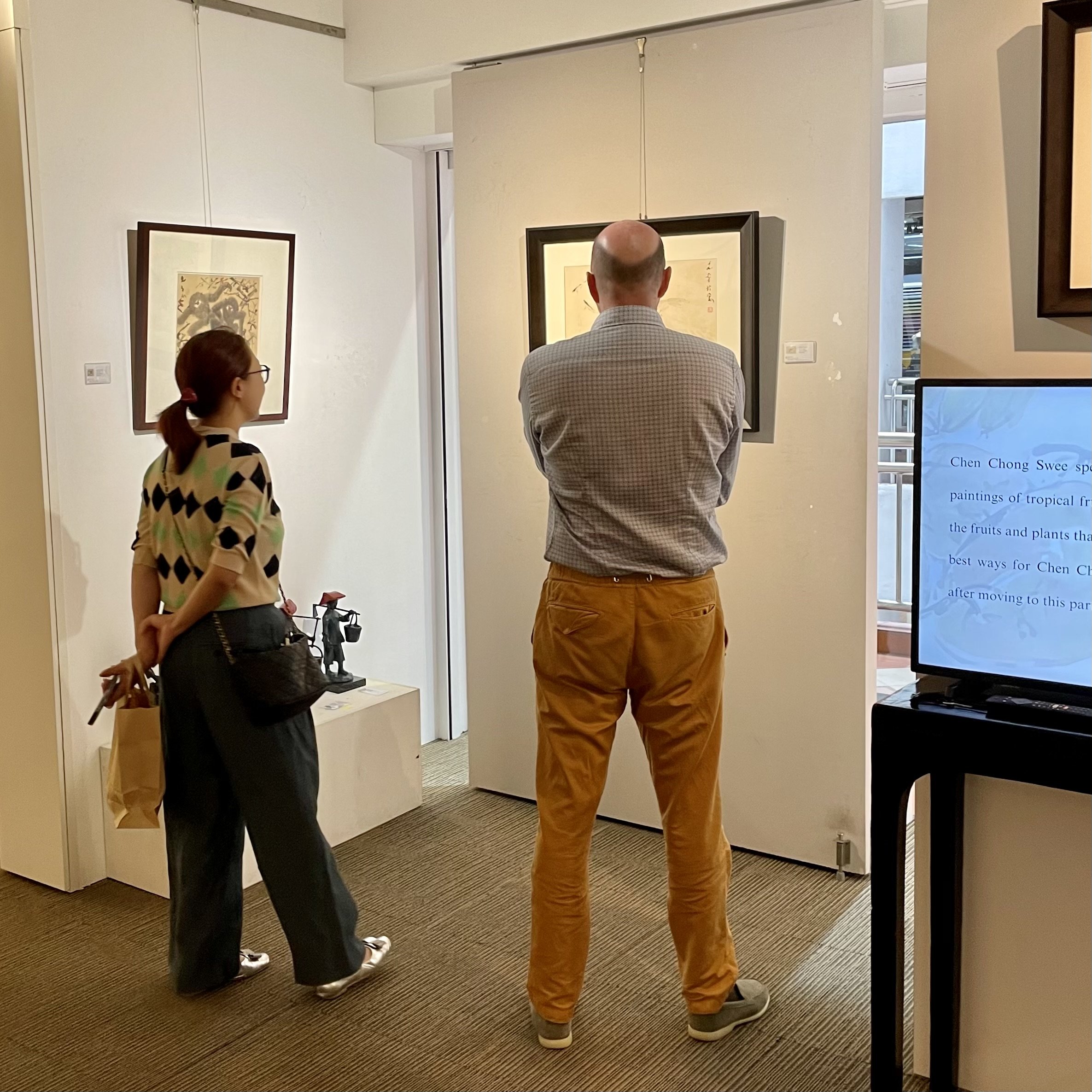
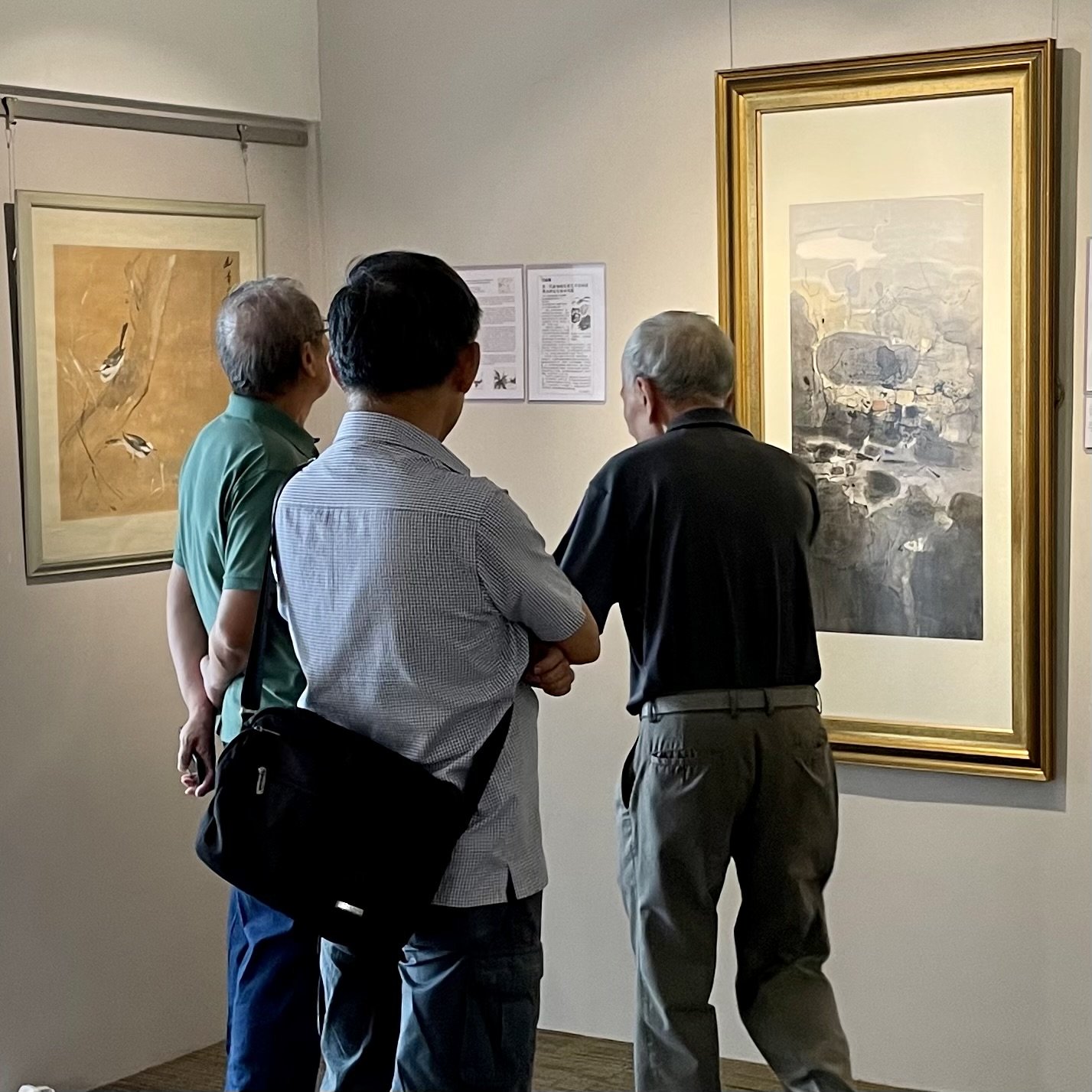
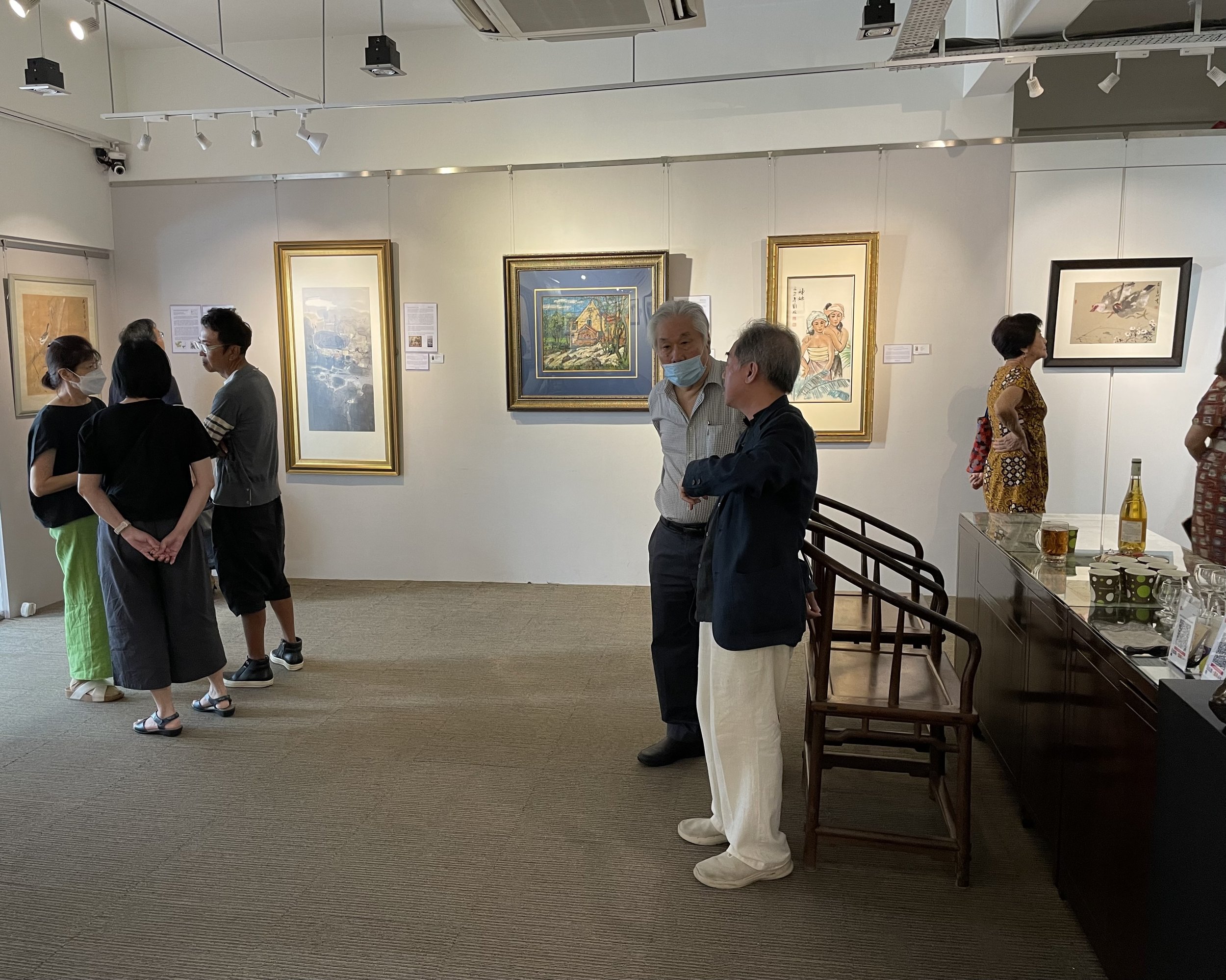
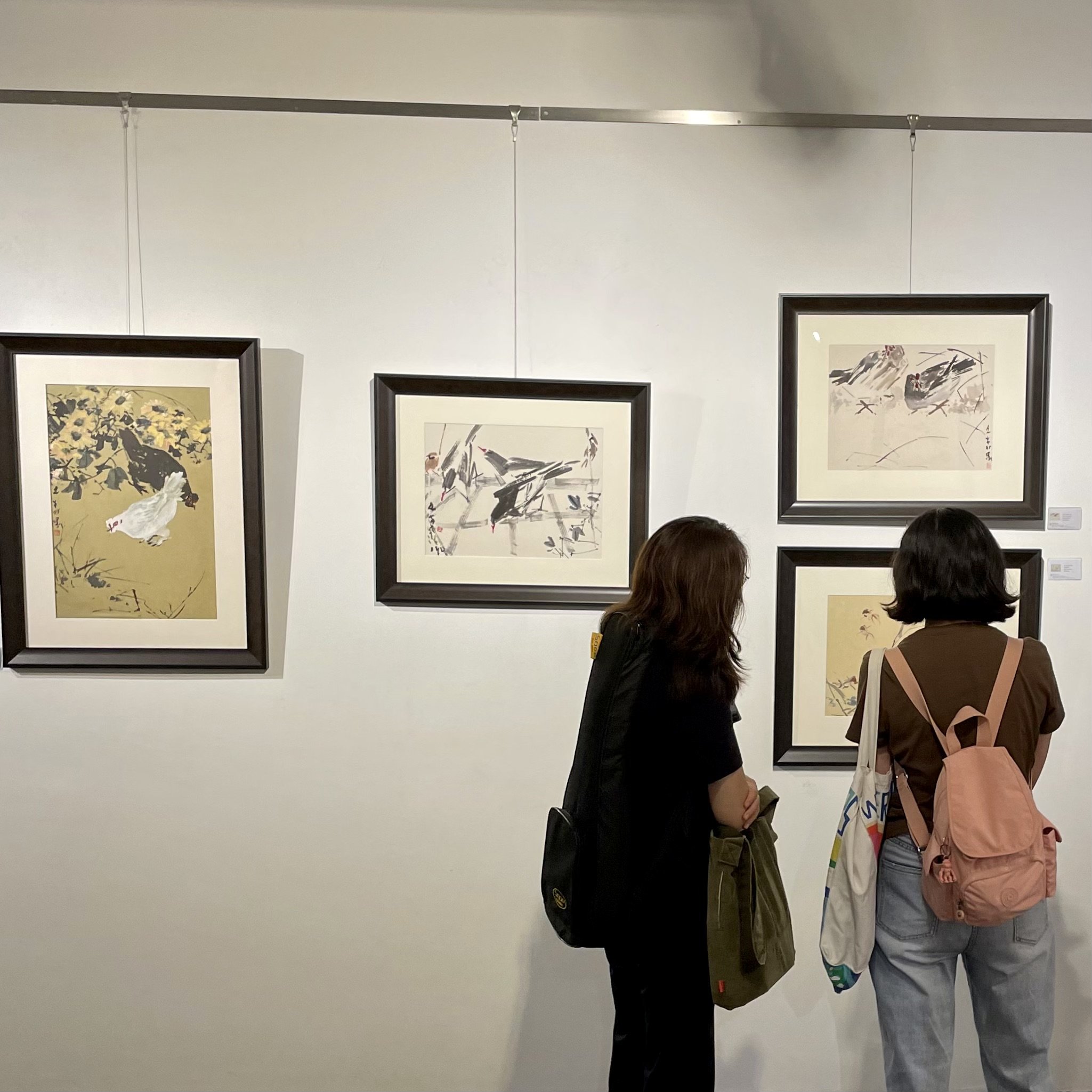
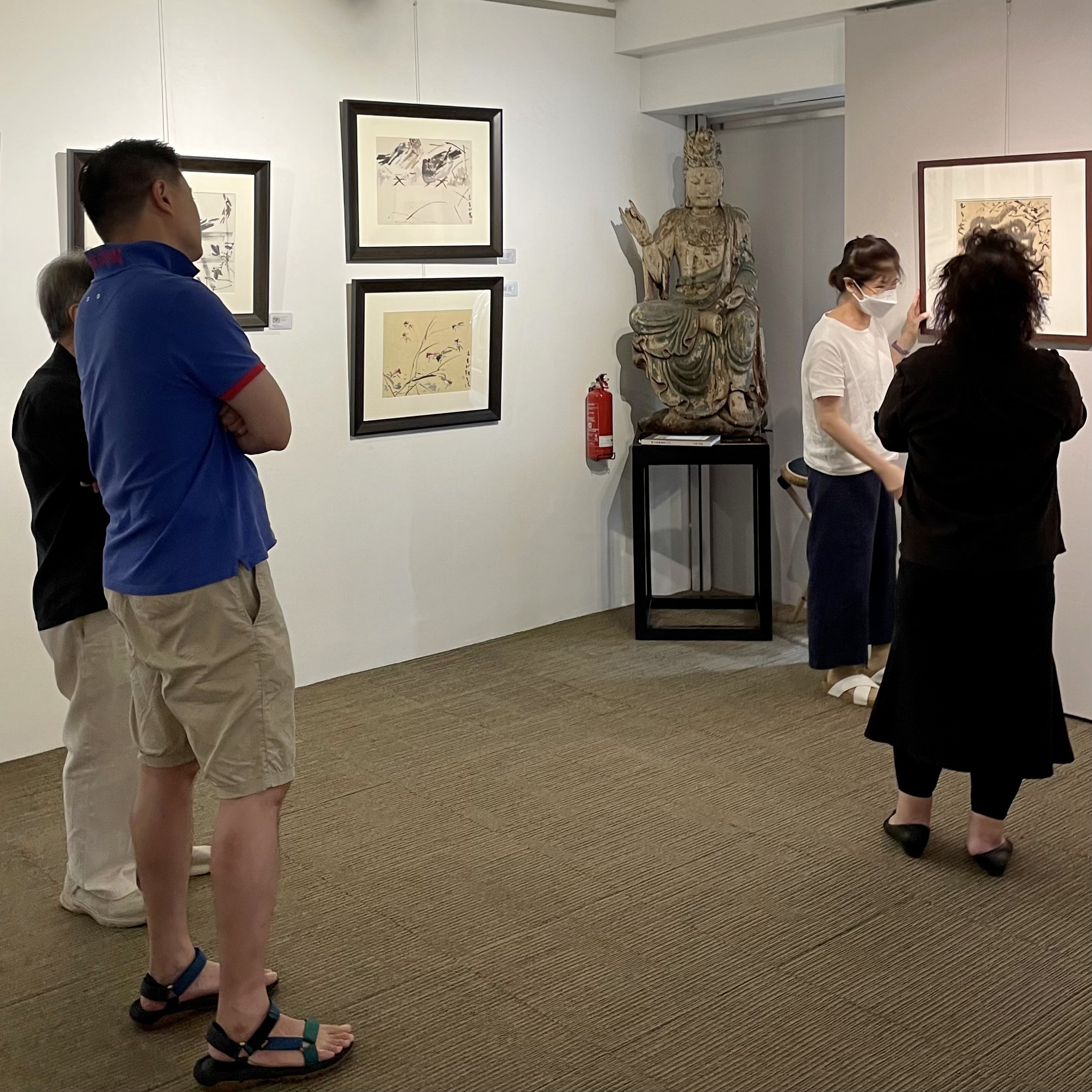
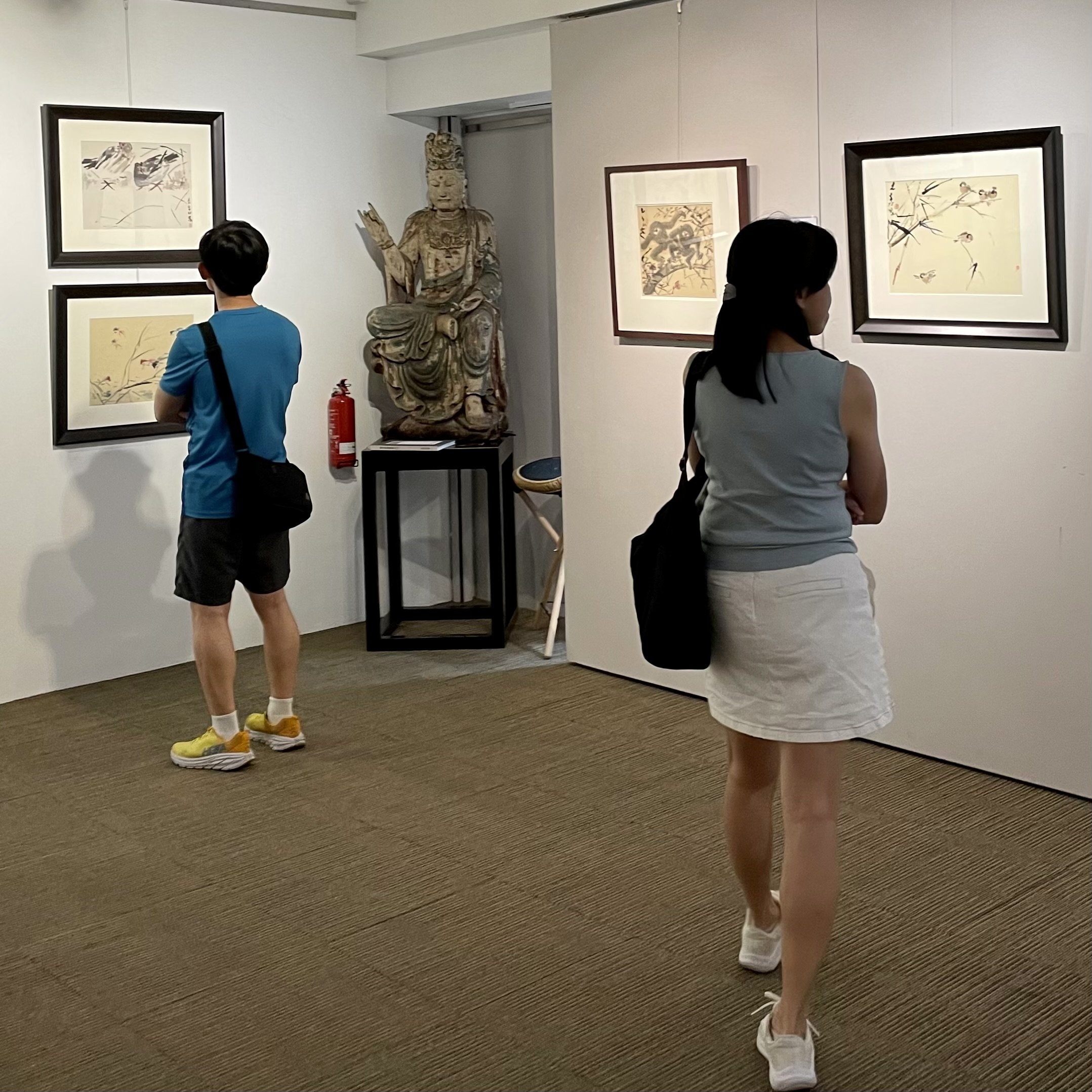
Liu Kang (1911 - 2004)
Liu Kang travelled to Singapore during the late 1930s. He taught art at Nan Chiao Teachers’ Training College and Chung Cheng High School.
Liu Kang was well educated in both western and chinese styles of painting. He travelled to Paris in the late 1920s till early 1930s before moving to the southeast asia region. He studied at the Academy de la Grande Chaumiere in Montparnasse, located at the the south of Paris. His paintings were regularly selected for exhibition at the annual Salon d’Automne. When he stayed in Singapore, Liu Kang often painted sceneries, seascapes, villages and locals of the places he visited. For instance, he painted balinese women after making a trip to Bali in the early 1950s. He thought that grace, simplicity and leisure were the main beauties of the people and life in Bali.
Liu Kang was active in the local art scene. He was a founding member of the Singapore Art Society and served as its president for 10 years. An exhibition of Liu Kang’s paintings were held at the Singapore Art Museum in 1997. Several paintings by Liu Kang such as “Durian Vendor”, “Picnic” and “Outdoor Painting (In Johore) are in the collection of the National Gallery Singapore.
Water Mill by Liu Kang
刘抗1931年作品 - 水磨坊
Liu Kang was inspired to further his studies in Paris by Chen Hong, one of his two life drawing teachers while studying in Shanghai. He travelled to France in 1928. He chose to study at the Academy de la Grande Chaumiere in Montparnasse, located in the south of Paris, France. Liu Kang’s painting were regularly selected for exhibition at the annual Salon d’Automne. In 1933, Liu Kang returned to the Shanghai Academy of Fine Art to teach western painting at the request of Liu Haisu.
Sisters by Liu Kang
刘抗1997年作品 - 姐妹
Yeh Chi Wei (1913 - 1981)
Yeh Chi Wei moved to Singapore in 1937. Three years later he moved to Sibu, Sarawak. In the 1940s, he taught art at the Muar Chung Hwa High School in Malaya and Chung Cheng High School in Singapore. In 1952, he moved to Singapore and continued to teach at Chung Cheng High School. His students included Lim Tze Peng, Liu Thai Ker and Ho Kah Leong.
Yeh Chi Wei travelled widely and visited many places in Southeast Asia. For instance, he travelled to Jave Indonesia in 1962, Cambodia in 1963 and to Philippines in 1976. These trips were often group painting excursions that he organised and art exhibitions would be held after these trips. For instance, a group exhibition was held at the Victoria Memorial Hall after a painting trip was made to the East Coast of Malaysia.
Yeh Chi Wei was deeply engaged in the local art scene. He served as the president of the Society of Chinese Artists in 1968, vice president of The Singapore Art Society in 1969 and led the Southeast Asia Art Society in 1970. A retrospective exhibition of Yeh Chi Wei’s paintings was organised at the Singapore Art Museum in 2010.
Untitled Abstraction by Yeh Chi Wei from 1961
叶之威1961年作品
It was around the 1960s that Yeh Chi Wei begun to shake off his realistic tendencies. He went on several painting trips which exposed him to different cultures. He started reading many books on western painting with the help of his wife who translated english texts to Chinese.
Yeh Chi Wei came to realise that abstract painting was a way to discover the essence of painting. It brought about a deeper and more incisive form of expression. Yeh Chi Wei started breaking down the forms of his subjects into planes or blocks and started using a variety of lines and colours to produce his compositions.
Malacca Street Scene by Yeh Chi Wei
叶之威作品 - 马六甲街景





























